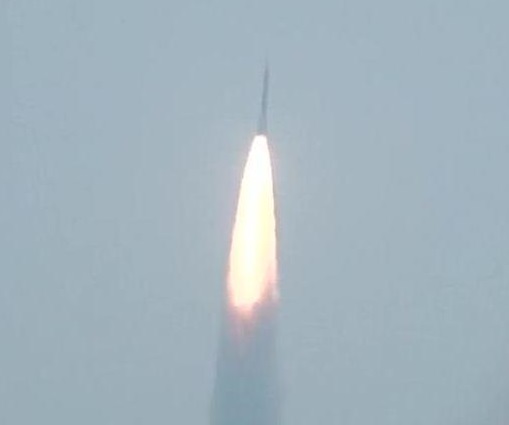PSLV-C30 rocket carrying India’s ASTROSAT and six foreign satellites has been launched from Sriharikota.India now becomes the first country in the developing world to have its very own telescope in space.Indian space agency joins a very select club, since only the USA, European Union and Japan have similar capabilities. China lacks a space observatory.This satellite is really akin to the mythical ‘third eye of Lord Shiva’ as it can view the Cosmos in ways the human eye is not capable of observing. It will be used to study black holes and analyse how stars and galaxies are actually born and how they ultimately die.This flight of the Polar Satellite Launch Vehicle (PSLV) is historic as, for the first time, American satellites are being launched by India. Till recently, the US had kept ISRO under sanctions and technology was being denied on a regular basis so much so that under pressure from the USA, India was denied the critical cryogenic engine technology which pushed back Indian foray into deep space by two decades.
Now, these four small LEMUR satellites are being launched on a commercial basis for a San Francisco-based company.India’s low cost of launching made the Americans shun their attitude of untouchability that they had adopted towards ISRO.The PSLV is also carrying a Canadian and an Indonesian small earth observing satellite as a piggyback payload. This will be the 31st flight of the workhorse PSLV rocket, which has had 30 consecutive successful flights till date.It will be placed almost 650 kilometres above the surface of the Earth and is expected to have a mission life of 5-years.
AstroSat comes in the wake of the highly-successful Mangalyaan mission, which made global history just a year ago when India became the first country to reach the Red Planet on its debut attempt. The Mars Orbiter Mission, or MOM, and AstroSat are comparable in both being low-cost missions with limited scientific capabilities.The Astrosat has cost Rs 178 crore to make and has been made ready in ten years though it was conceived more than 20 years ago.ISRO asserts that “India will be the only country having a multi-wavelength space-based observatory capable of monitoring intensity variations in a broad range of cosmic sources”.Professor Sujan Sengupta from the Indian Institute of Astrophysics, Bengaluru, says, “AstroSat has modest capabilities, but it is unique as it can see in many wavelengths.”
AstroSat is the first scientific telescope in the world that has four inbuilt specialised cameras to simultaneously track objects in many-many different wavelengths. This multi- spectral viewing capability gives it a unique edge as compared to earlier space telescopes.According to ISRO, the satellite will have concurrent wide spectral coverage over visible, ultra-violet, soft X-ray and hard X-ray regions of the spectrum.The 1,515-kilogram satellite has been assembled at the ISRO Satellite Centre in Bengaluru. For the first time, several scientific institutions got together to contribute the scientific instruments.
Top Indian institutions like Tata Institute of Fundamental Research (TIFR), Mumbai; Indian Institute of Astrophysics (IIA), Bengaluru; Inter-University Centre for Astronomy and Astrophysics (IUCAA), Pune; and the Raman Research Institute (RRI), Bengaluru, are involved in payload development.Two of the payloads are in COLLABORATION with Canadian Space Agency (CSA) and University of Leicester, UK.Global astronomers are excited about AstroSat. Dr John Hutchings of the Herzberg Institute of Astrophysics, Canada, who is participating in this Indian experiment, says that black holes, neutron stars, pulsars, white dwarfs, quasars, and active galactic nuclei are just some of the cosmic objects that the AstroSat will observe.Till date, only the Americans, Europeans and Japanese have similar space-based telescope capabilities. Even the Chinese have not attempted such a complex mission. China is still working on its first space telescope called the ‘Hard X-ray Modulation Telescope’, which will be ready in a few years.India could once again beat China in a crucial technology development in space. Experts say the two regional rivals are locked in a twenty-first-century Asian space race. China is way ahead, but in the race to Mars, India did reach the pole position.





